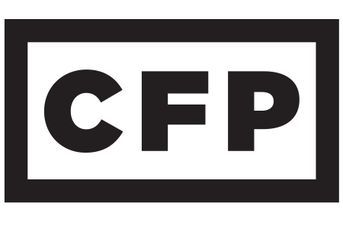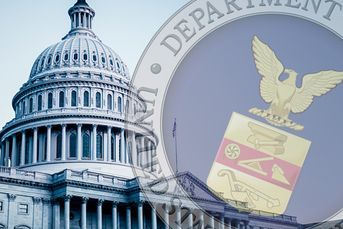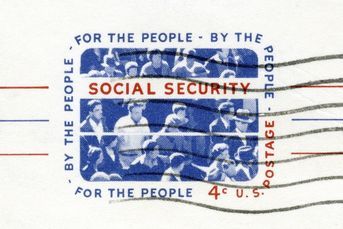Why do we need self-regulatory organizations? – Cook
Broad questions on the rationale for SROs in the securities industry provide a starting point for the regulator to review and hone its mission, says CEO Robert Cook.
This is an edited version of a speech given March 24 by Robert W. Cook, president and CEO of the Financial Industry Regulatory Authority Inc., at the New Special Study Conference at Columbia University in New York.
Self-regulation was first codified in the federal securities laws more than 80 years ago as what some might call a special form of public/private partnership. Since that time, as with other aspects of the industry … the evolution in the nature and role of self-regulatory organizations has been sweeping. Finra, which is the only SRO that is a national securities association, is no exception.
I am eager to identify steps Finra can take to better achieve its mission. Since I became CEO, I have been on a listening tour, meeting with investor advocates, member firms, industry groups, fellow regulators, policymakers and other stakeholders to hear their perspectives on Finra. In charting a course for Finra over the next several years, it is critical that we understand what our stakeholders think we are doing well and where we may be falling short.
This listening tour has generated valuable feedback, most of it focused on how Finra performs its day-to-day regulatory operations. And we are acting on this feedback. We have launched a comprehensive organizational improvement initiative — Finra360 — to take a fresh look at our operations to ensure we are optimally organized and managed to achieve our mission.
The listening tour has also revealed broader questions from some about what self-regulation should look like today. As a membership organization, we must be open to a conversation with our members about these questions, and other perspectives must be part of the dialogue as well. Finra must be willing to consider any changes that will better serve the interests of investors while promoting strong and vibrant capital markets.
Where, then, to start thinking about SROs? One useful point of departure is to review the rationale for self-regulation in the securities industry. Why do we have SROs? Why not just have the government handle their regulatory functions?
(More: Brokers riled by overlapping enforcement penalties from multiple regulators)
Self-regulation in the securities industry has traditionally been understood to provide three distinct advantages compared with direct regulation by the government. The first involves access to expertise. SROs that operate markets are experts regarding how those markets work. And all SROs can involve their member firms more directly in their deliberations and thus benefit from their expertise on relevant matters, such as the different business models of those member firms and how they operate in practice, the complex and rapidly evolving securities markets in which they trade, and the wide range of investors they serve. SROs can use what they learn from their members to enrich their regulatory programs and develop solutions that are perhaps more practical, tailored and effective than what could be developed without such input. The connection between an SRO and its members can also help SROs more rapidly identify and respond to new risks to investors and markets. And it can enable an oversight of the day-to-day operations of markets and firms that is impractical for the government.
The second advantage that has traditionally been identified is that SROs can raise the standard of conduct in the industry. This benefit is most apparent in the ethical requirements and detailed business conduct rules that an SRO can establish that extend beyond the realm of federal law. These standards can deter dishonest and unfair practices that might not amount to fraud, but nonetheless can undermine investor confidence and compromise capital formation. For example, Finra and most exchanges require firms “to observe high standards of commercial honor and just and equitable principles of trade,” in addition to prohibiting manipulative, deceptive or other fraudulent practices. Just and equitable principles of trade require standards of behavior above and beyond those required by the antifraud provisions, and they allow SROs to deal with types of misconduct not yet specifically described by a particular rule.
Finra also has detailed individual testing and continuing education requirements, and extensive provisions addressing key functions like supervision and communications with the public. Another example is the best execution rule. And SRO rules, such as Finra’s Uniform Practice Code and customer account rules, can also address highly complex operational matters. When informed by close consultation with the industry, these rules can result in a regulatory framework that takes into account nuances of market practice and behavior in ways that go beyond what might normally be expected from the government.
NOT FUNDED BY TAX PAYERS
Third, SROs are funded by their regulated entities, and do not rely on taxpayer dollars. The industry bears the cost of its own supervision, which alleviates the need for ever larger government expenditures for this purpose. This funding can lead to heightened supervision. In the case of Finra, for example, the SRO model has resulted in a regulatory regime in which every broker-dealer member of Finra is examined at least once every four years by the SEC or Finra, and many are examined more frequently. New entrants to the industry must have their applications approved by Finra, and they are examined within one year of becoming members. Industry funding also provides greater certainty regarding the timing and availability of funding and thus greater ability to make capital investments in longer-term initiatives.
In addition to the advantages traditionally recognized, I would add a few more based on my observations from my brief tenure at Finra. First, considering that the ultimate goal of securities regulation is to change behavior in ways that protect investors and promote strong capital markets, Finra’s SRO model enables it to pursue that goal in creative, practical ways that go beyond what we might normally expect from the government. For example, Finra engages in extensive investor education initiatives and has various programs — like our Helpline for Seniors — through which we can provide direct practical assistance to investors.
In addition, Finra can work with its members to create templates, checklists, compliance report cards and other practical tools to aid member firms in developing policies, procedures and programs for compliance. It also can offer a program of conferences, meetings and education that are responsive to the real-world compliance challenges and questions identified by firms.
(More: Finra bars broker charged in NY pension fund hookers, strippers and drug scandal)
Another advantage of the SRO model that I have observed first-hand at Finra is that we can provide industry utilities that benefit members and investors alike. For example, as a non-profit entity, Finra operates services like BrokerCheck. Finra also operates the CRD, the central licensing and registration system for the U.S. securities industry and its regulators. Finra’s TRACE platform has brought unprecedented transparency to transactions in corporate bonds and other fixed-income instruments, and soon will provide an audit trail of broker-dealer transactions in U.S. Treasury securities. Finra also operates a dispute resolution forum for securities-related arbitrations and mediations.
Now, it is relatively easy for me, as part of Finra, to describe the many benefits of the SRO model. It is much harder to objectively assess the extent to which SROs actually deliver on these potential benefits, what downsides the model may bring with it what alternatives should be considered and what policy prescriptions all this analysis might suggest. Assessing our own performance is part of the work underway at Finra today.
KEY CHALLENGE
I would like to spend a few minutes … on what has been viewed as a key challenge presented by SROs since their inception: the potential for self-interest inherent in the model. Since federal law first recognized SROs, much attention has been focused on how to ensure that self-regulation ultimately serves the public interest.
For Finra … the core question around self-interest in self-regulation is somewhat different than for exchanges. Often it is framed as whether the industry has too much control over Finra. If this were to happen, Finra might fail to adequately proscribe, sanction and deter behavior that could harm investors and markets, and public confidence in securities regulation and in the integrity of our markets might be undermined.
There are several instances in the history of Finra’s predecessor, the NASD, when the SEC determined that industry influence was problematic. For example, the Special Study found that SROs as they existed at that time tended to subordinate the investing public’s interests to the interests of its members. Among other things, the Special Study called for strengthening SRO governance, clearer standards and enhanced regulation of sales practices. Another important example occurred in 1996, when the NASD settled with the SEC allegations of impropriety involving oversight of NASDAQ market makers by agreeing to a number of structural and other reforms.
More recently, several commentators have expressed concern about the opposite problem: that Finra’s members do not have sufficient involvement in its affairs today. Although articulated in different ways, this criticism has centered on whether Finra’s agenda and operations fail to adequately take into account the member perspectives that should inform and enrich its regulatory model. If true, the lack of sufficient industry engagement in Finra’s deliberations could mean that one of the benefits of self-regulation that I just described — ready access to and use of member expertise in order to craft creative regulatory solutions — is not being fully realized.
So does Finra’s structure today strike the optimal balance between the benefits of active industry participation in regulatory decisions and our obligation to protect the investing public as a vigilant regulator?
To consider this question, it is important to understand Finra’s current structure, which has been re-engineered over time based on studied consideration involving not only Finra’s Board of Governors, but also Congress, the SEC and our own members. The various elements of this structure create a system of checks and balances intended to enable member participation in regulation while limiting the extent of industry control over Finra’s operations.
Central to this structure are several channels for engagement with the industry, starting at the top. Finra’s board has substantial industry representation that cuts across all firm sizes. Excluding the CEO, industry governors constitute 45% of the board. This structure was voted on and approved by Finra’s members in 2007, when Finra was created from the consolidation of the member regulatory functions of the NASD and the NYSE. Some have incorrectly suggested that this merger marked the end of the era of “true SROs” — by which they apparently mean SROs that were predominantly governed by their members. In fact, however, the merger did not represent a fundamental change in governance. For at least 10 years before the consolidation, the NASD had a majority of non-industry governors. And all of the directors of the board of NYSE Regulation, with the exception of its CEO, were independent.
Another significant channel for industry engagement is Finra’s extensive committee structure. We have advisory committees, district committees and ad hoc committees that play an important substantive role in the development of rules and other initiatives by, among other things, providing feedback to proposals and identifying emerging regulatory concerns. We recently issued a Special Notice that describes our committees in detail and solicits comment on their effectiveness … I will note that at least four standing advisory committees (and often other committees as well) review all significant rule proposals that require board approval, and their comments are shared with the Board to inform its deliberations. Finra’s committees also play an important role in other activities. For example, our Economic Advisory Committee includes expert economists and supports our commitment to evaluating and minimizing the economic impacts of regulatory initiatives, and our Market Surveillance Advisory Group includes other academics who help Finra evaluate and enhance its surveillance programs.
The Special Notice outlines a series of other significant channels for industry input on Finra’s regulatory decisions, including a rulemaking process that generally provides more opportunities for public input than occurs with government agency rulemakings and an adjudicatory process that includes experienced industry panelists. The Notice also outlines Finra’s extensive member relations program.
Each of these channels for industry input is accompanied by checks and balances to ensure that Finra’s operations ultimately protect investors and promote the public interest. Here, too, it starts at the top — a majority of board membership consists of public governors who have no material business relationship with a broker-dealer or registered SRO.
MEMBERS OF THE PUBLIC
Similarly … members of the public serve on key advisory committees, and our work is informed by an Investor Issues Committee composed of notable academics, consumer advocates, former securities regulators, institutional investors and asset managers. This committee is one of the four that reviews all proposals going to the board. As I mentioned before, Finra also maintains very significant investor outreach programs, through which it can identify and draw on additional investor perspectives.
But it is also important to recognize that Finra’s self-regulatory model does not rely exclusively on non-industry input to counter-balance and address the risk of inappropriate industry influence. All of Finra’s governance and regulatory operations are extensively overseen by the SEC, which has broad authority to audit Finra’s programs and direct remedial actions. For example, with limited exceptions, Finra must obtain SEC approval for all of its rules, and Finra’s adjudicatory decisions ultimately may be appealed to the SEC and federal courts. Finra must comply with SEC regulations and is subject to frequent SEC oversight examinations.
In addition, the SEC has broad authority to add, delete or amend Finra rules, suspend or revoke Finra’s registration, censure or impose limitations on Finra, and remove from office or censure any Finra officer or director. Finra’s jurisdiction and authority is also limited by the Exchange Act itself, which reserves important authorities for the SEC and other law enforcement agencies.
Finra augments this external oversight with internal mechanisms to ensure regulatory vigilance and accountability. Finra staff must abide by an ethics code of conduct. An independent internal audit staff that reports to the board’s Audit Committee reviews all aspects of Finra’s regulatory operations. Finra also maintains an ombudsman who functions independently from other departments and Finra management, and who also reports to the Audit Committee.
FINRA360
But I would not have invited this discussion unless I thought there might be opportunities for Finra to improve. The Finra360 initiative was launched for exactly that reason: to identify ways to make Finra better — more thoughtful, more efficient, and more effective. This effort depends on ongoing, meaningful engagement with our members, with investors and with the full range of our stakeholders. We expect that additional Special Notices requesting comment on other aspects of our operations will follow.
More broadly, as you continue your work on the New Special Study, I also welcome your thoughts on the current SRO regulatory framework and how to improve it. While I have offered you some general observations on the benefits of the SRO model and on the conflicts of interest inherent in that model, these themes can be developed more fully. For example, are there places where we could safely inject more industry participation or, conversely, where the extent of industry influence has called into question our vigilance?
And there are plenty of other issues related to the SRO model worthy of consideration as well. For example, are there activities in which Finra or other SROs should, or should not, engage in order to more effectively achieve its mission?
DUPLICATE REGS
Is the relationship between the SEC, Finra and the other SROs optimally designed to avoid regulatory duplication? What should be the allocation of responsibilities between the SEC and the SROs in terms of cross-market surveillance (especially when we have a consolidated audit trail) or in terms of member regulation? As you review the overall balance of regulation between broker-dealers and investment advisers … what implications are there for both SRO regulation of broker-dealers and for examination and oversight of investment advisers?
In the meantime, I will leave you with a final thought. The U.S. capital markets are among our nation’s greatest assets. While their strength depends on many complex factors, it is perhaps not coincidental that we are one of the few countries in the world in which SROs have been an integral part of the regulatory framework for many years. We must not shy away from changes that can improve the SRO model. But we also should be sure that any interventions are based on careful study of the different structures and features of each of today’s SROs and are well-designed to better protect investors and promote safe and vibrant markets.
Open-mindedness and self-reflection are indispensable to effective self-regulation. So it is in the spirit of self-regulation that I look forward to your continued contributions.
Learn more about reprints and licensing for this article.








